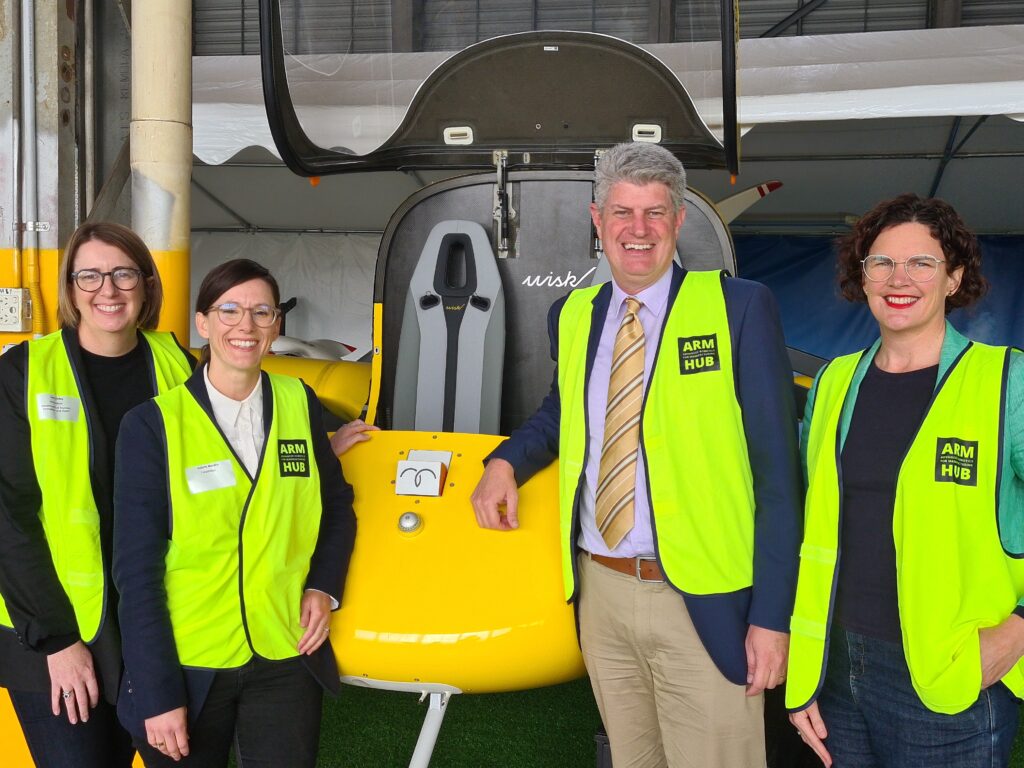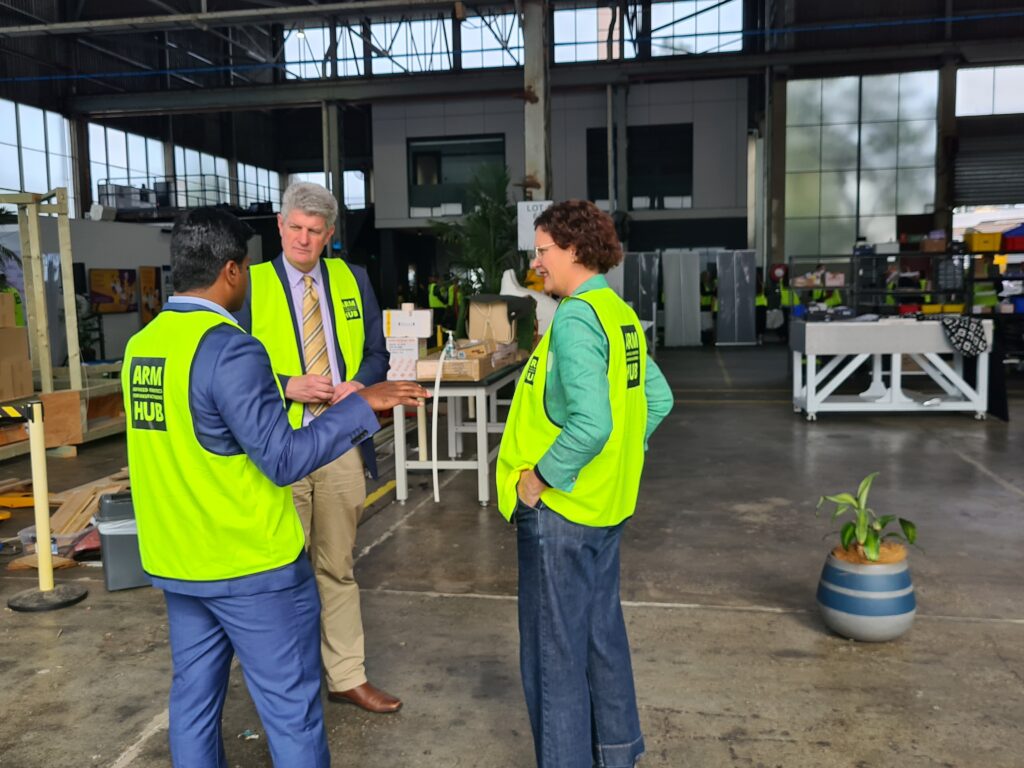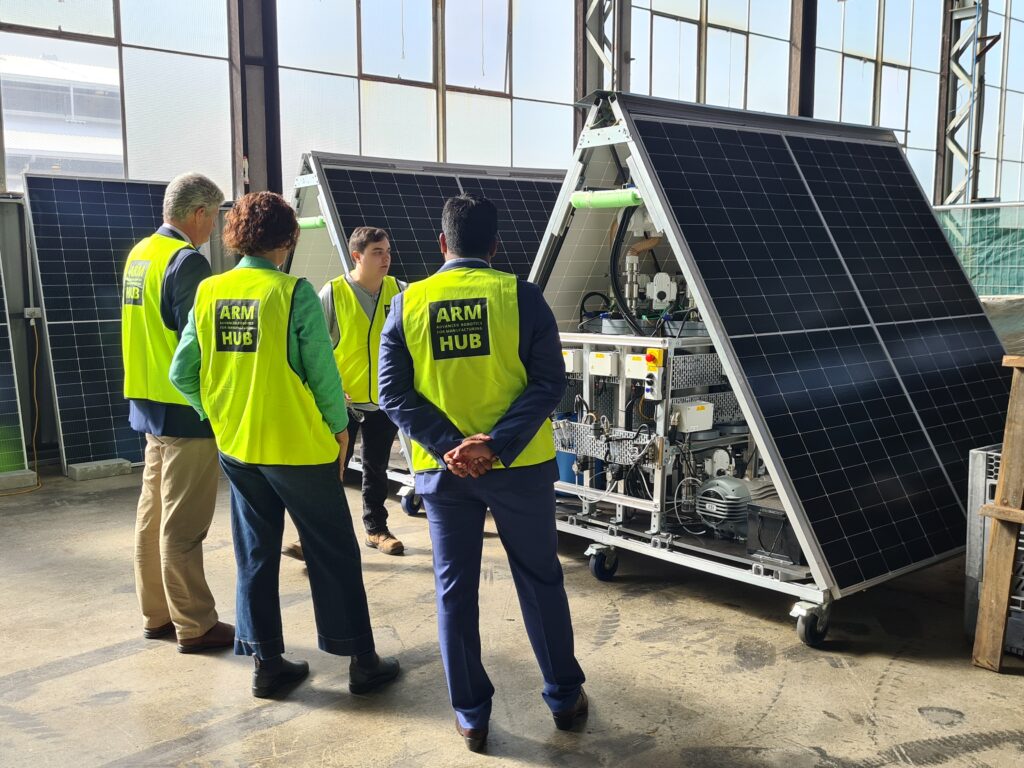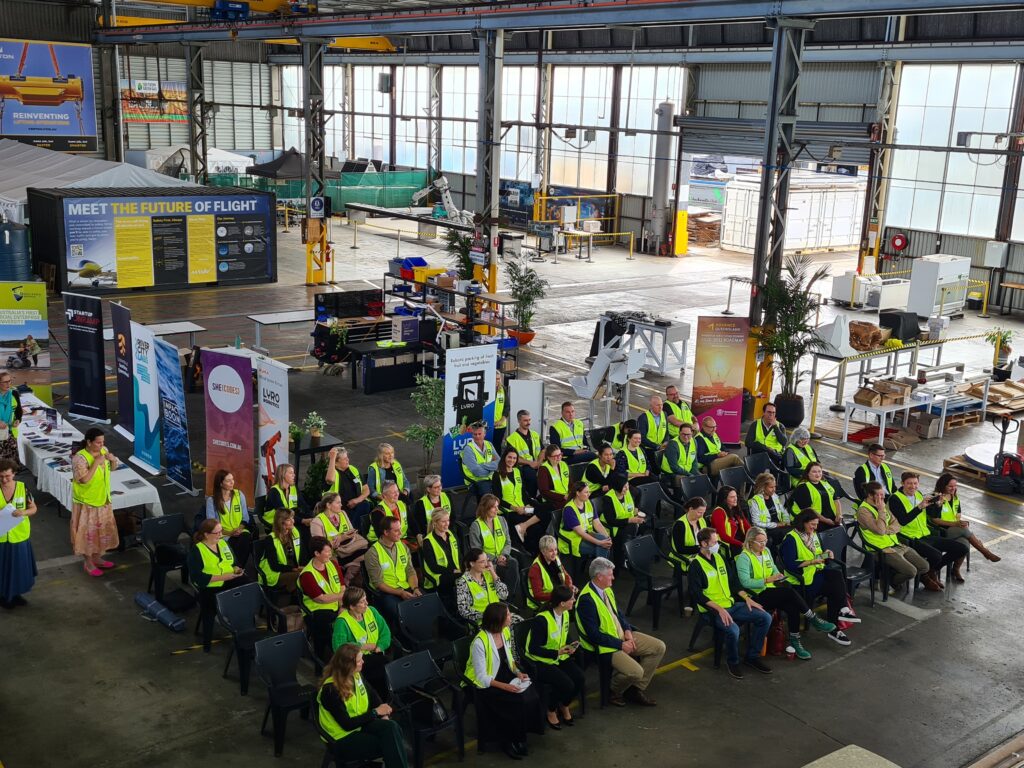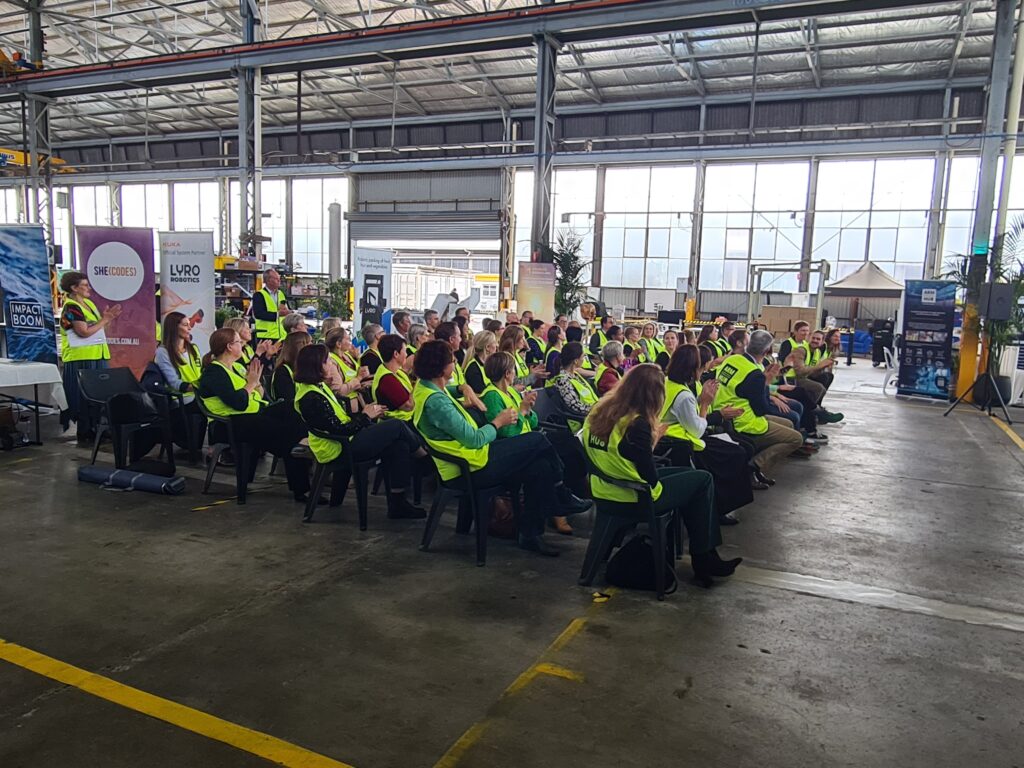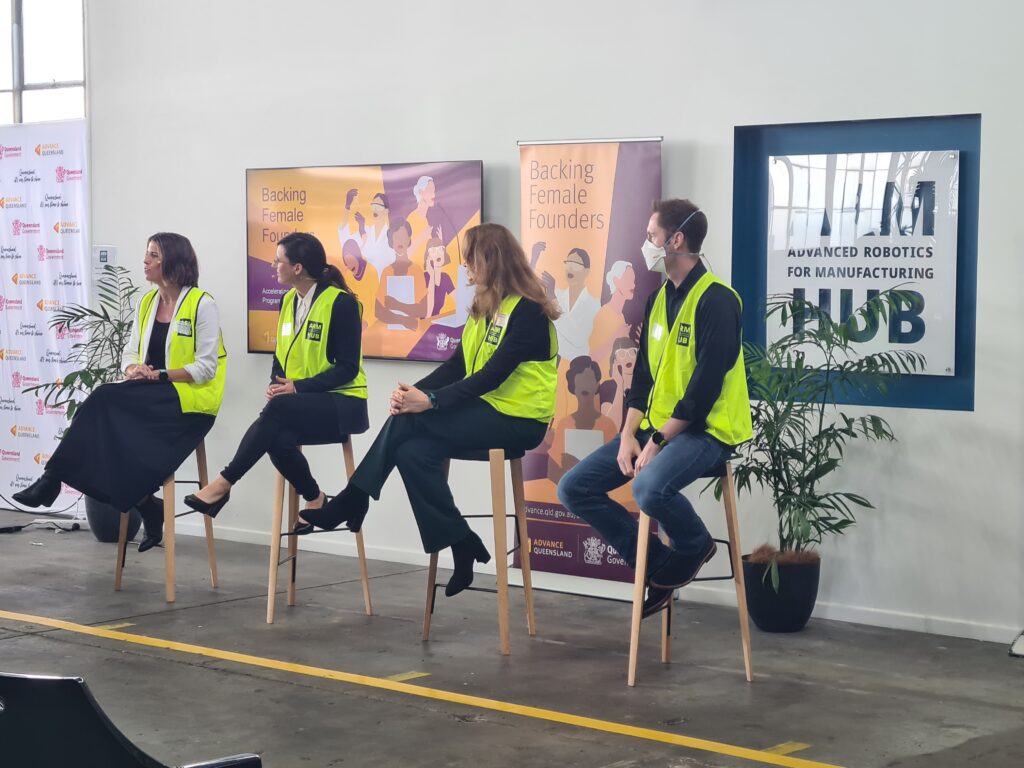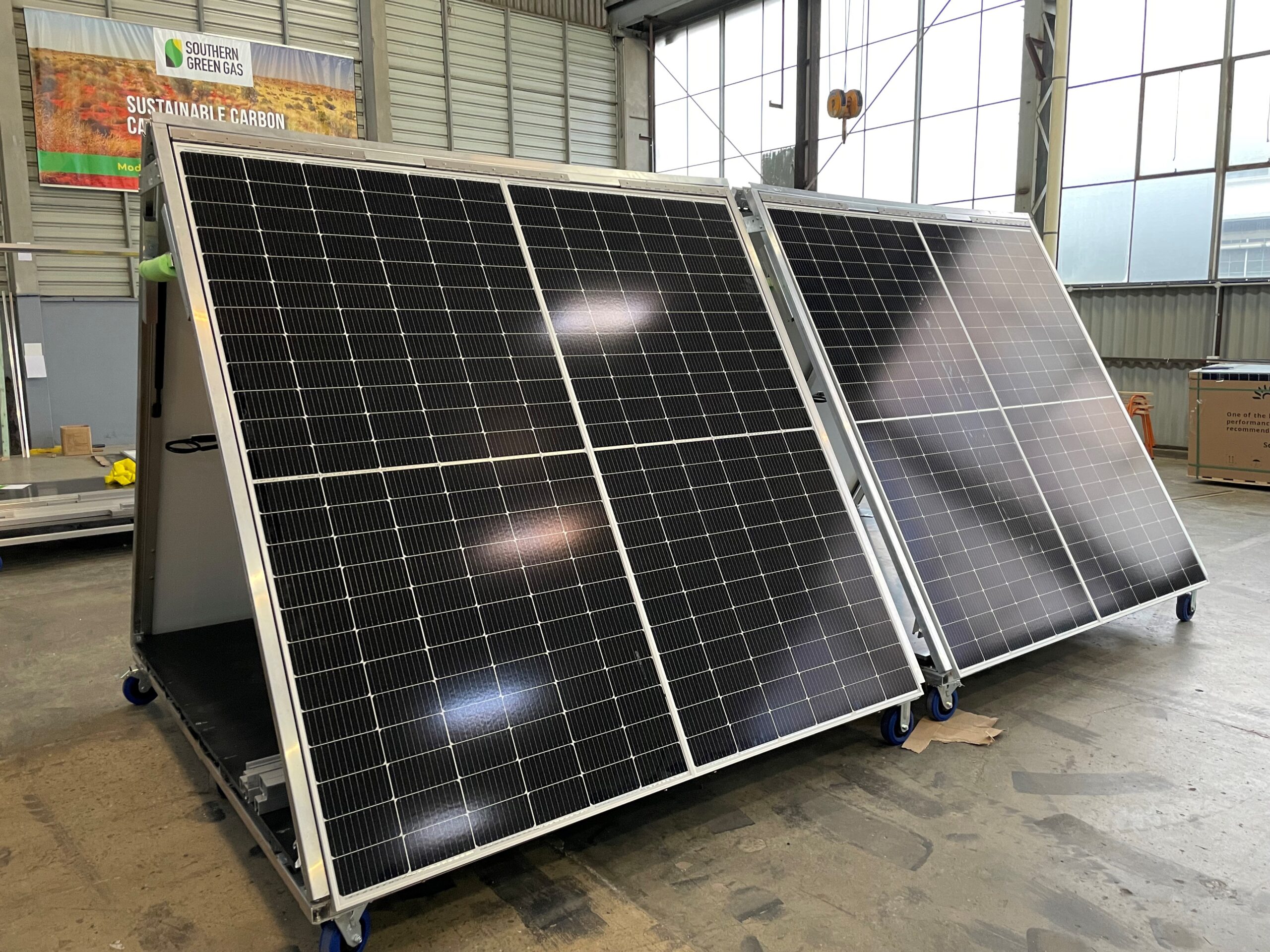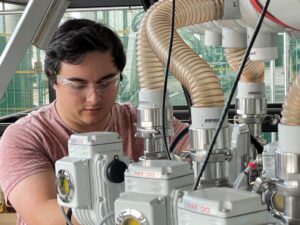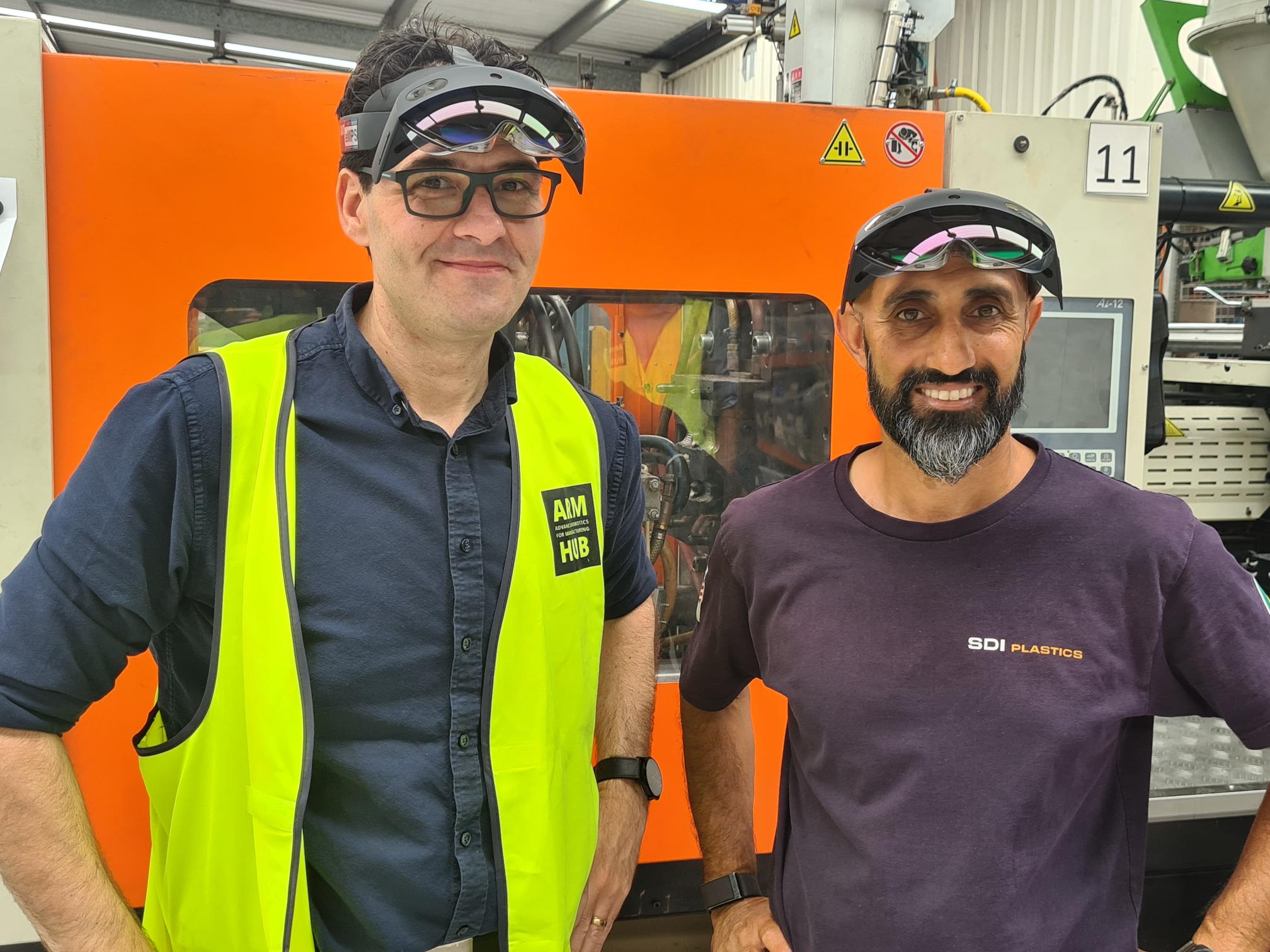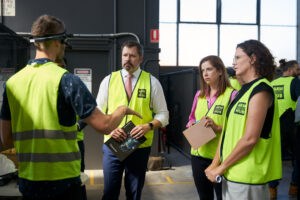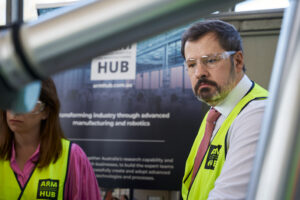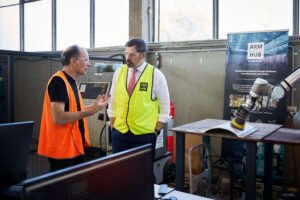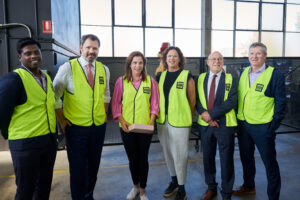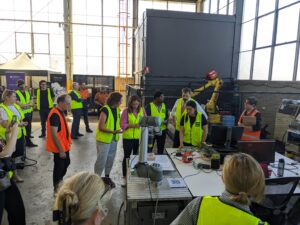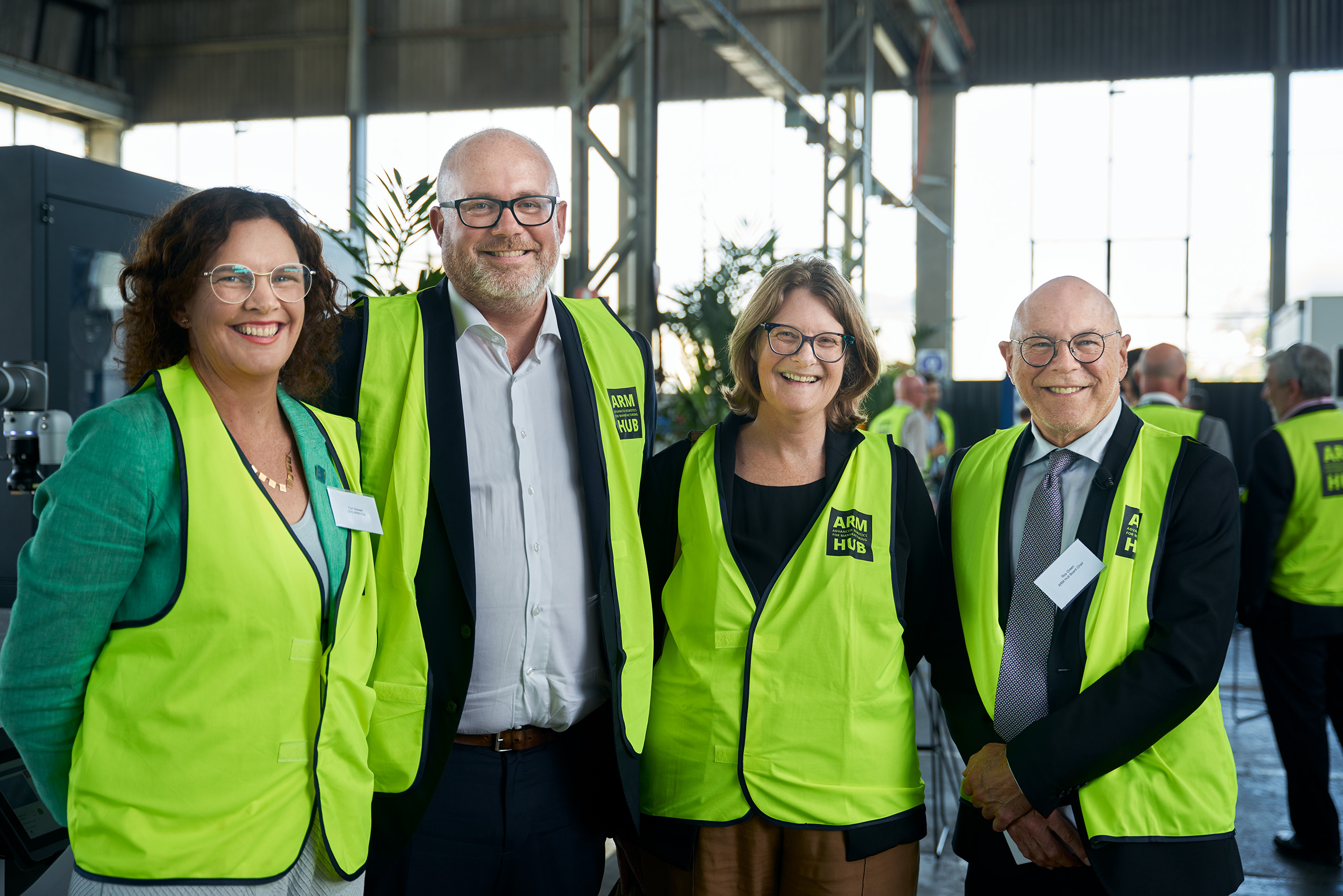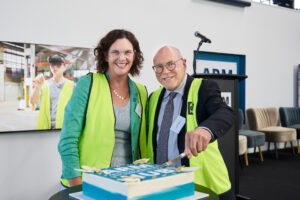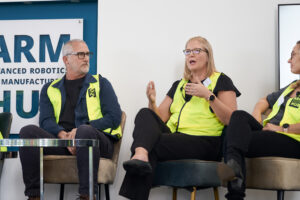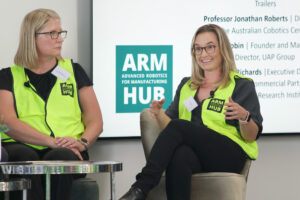The ARM Hub has opened a new technology accelerator for female founders of Queensland-based technology and manufacturing companies.
The ARM Hub Technology Roadmap Accelerator for Female Founders is designed to help female business owners or women leading companies to take their business to the next level.
ARM Hub CEO and founder Dr Cori Stewart opened the Expressions of Interest in the accelerator during a special event with Queensland Minister for Tourism, Innovation and Sport Stirling Hinchliffe at ARM Hub today.
“As a female founder myself, I’m thrilled to be able to offer this program to Queensland’s entrepreneurs and business leaders,” Dr Stewart said.
“The accelerator goes beyond refining your business objectives. We help you identify and plan the Industry 5.0 technologies you need to scale your business.
“These roadmaps are fit-for-purpose, designed with the help of leading Australian experts in the field of robotics, artificial intelligence, automation, and design-led manufacturing.
“This is a great opportunity for Queensland small-to-medium businesses and micro-businesses to tap into a wealth of knowledge and experience.
“Roadmaps are essential for growing your business and becoming more attractive to investors.”
The accelerator is open to women in Queensland who have founded a business, are in a business that is 50% female owned, or is led by a female (e.g., CEO, Director, Executive).
To gain the most benefit from the accelerator, we recommend applying if:
- your business or product is underpinned by, or includes, a technology component, OR
- your business or product requires manufacturing, OR
- you business or product includes a technology component and requires manufacturing.
The ARM Hub Technology Accelerator Roadmap for Female Founders is a joint initiative with VenturePro and is supported by Advance Queensland Female Founders Accelerator Program.
The Hub technology accelerator is one of 11 recipients of the first round of grant funding under the Advance Queensland Female Founders Accelerator Program.
Expressions of Interest for the Hub accelerator close on 15 August 2023. The accelerator will run from August to November 2023.
For more information please review the eligibility criteria or contact Director Marketing and Memberships, Angela Reed.

